Most people recovering from an addiction to an opioid drug or medication will experience a relapse fairly early in the treatment process. Two key factors in the onset of a relapse are the presence of continuing cravings or urges for opioid use and the onset of withdrawal symptoms after initial opioid detoxification.
In a study slated for publication in February 2015 in the journal Addictive Behaviors, a team of American researchers looked at the ways in which cravings and withdrawal symptoms impact the relapse risks for any given person recovering from prescription opioid addiction.
Opioid Cravings
All people dealing with opioid drug or medication addiction have longstanding chemical changes in their brain function that make them physically dependent on the continued intake of some form of opioid substance.
 Opioid cravings are essentially unconscious and conscious signals sent by the brain as a reminder of the established need to maintain at least a minimum level of opioid intake. Conscious cravings may manifest as clearly articulated thoughts supporting immediate opioid consumption or opioid consumption in the near future.
Opioid cravings are essentially unconscious and conscious signals sent by the brain as a reminder of the established need to maintain at least a minimum level of opioid intake. Conscious cravings may manifest as clearly articulated thoughts supporting immediate opioid consumption or opioid consumption in the near future.
Conversely, unconscious cravings may manifest as unarticulated urges for opioid intake. Conscious and unconscious cravings for the use of opioids or any other substance commonly stem from exposure to drug cues.
These cues are reminders of the actions commonly undertaken during episodes of substance use, the thoughts or feelings associated with substance use or the circumstances in which substance use typically occurs.
A strong drug cue can support a rapid escalation of drug cravings, and thereby steeply boost the short-term odds of drug use. The presence of opioid cravings is a diagnosable symptom of opioid use disorder (opioid abuse/addiction).
Opioid Withdrawal
Withdrawal is a second reinforcer used by the dependent/addicted brain to ensure the continued consumption of any given substance. It occurs when the levels of that substance fall below the levels required by the currently established conditions of addiction.
Opioid Withdrawal Symptoms
Specific symptoms of opioid withdrawal include:
- sleeplessness
- achy muscles
- an unusually anxious or agitated mental state
- excessive sweat production
- nausea
- vomiting
- pupil dilation
- diarrhea
- cramping in the stomach or abdomen
Unlike some forms of withdrawal (e.g., alcohol withdrawal), opioid withdrawal has no potential to trigger fatal changes in body function. However, affected individuals commonly feel uncomfortable enough to resume opioid intake. Withdrawal symptoms are usually most prominent during initial opioid detoxification. Along with opioid cravings and a range of other symptoms, doctors use the presence of withdrawal symptoms to help diagnose the presence of opioid use disorder.
Impact On Opioid Relapse Rates statistics
In the study scheduled for publication in Addictive Behaviors, researchers from the University of Texas Medical School at Houston, the University of Texas Health Science Center, the University of Texas Southwestern Medical Center and Harvard-affiliated McLean Hospital used information from a project called the Prescription Opioid Addiction Treatment Study to help determine exactly how opioid cravings and opioid withdrawal work together to increase the odds that any given person in recovery will relapse back into uncontrolled opioid use.
A total of 653 people dependent on or addicted to opioid medications took part in the study. All of these people received a commonly used medication, called buprenorphine/naloxone, that’s specifically designed to reduce the risks for relapse in people affected by opioid addiction.
The researchers concluded that there were four distinct groups of people in the larger pool of study participants: people with high levels of opioid craving and opioid withdrawal, people with moderate or intermediate levels of opioid craving and opioid withdrawal, people who transitioned from high levels of craving and withdrawal to low levels of craving and withdrawal, and people who maintained low levels of craving and withdrawal.
The researchers also concluded that three groups of participants were least likely to relapse back into uncontrolled opioid use: people who experienced a reduction in their craving and withdrawal levels over time, people who initially experienced low levels of craving and withdrawal, and people who responded well to the craving- and withdrawal-reducing effects of buprenorphine/naloxone.
The study’s authors believe that their work increases the level of understanding about those individuals most likely to rapidly relapse after entering treatment for prescription opioid dependence/addiction. They also believe that their work underscores the importance of paying close attention to changing craving and withdrawal symptoms during the recovery process.
Finally, the authors believe their work may increase the future ability to identify individualized treatment patterns that decrease each affected person’s chances of experiencing an early opioid relapse.
If you have a teenager in the house you have a lot of things to worry about. You want her to be successful in school, to have a lot of friends and to be happy. Whether you realize it or not, you also need to worry about substance abuse. You might think that your child is too well adjusted to ever try smoking, drinking, or using drugs, but you might be wrong. No teen is immune from peer pressure. Among the many worries we have as parents today, there’s a new one: e-cigarettes.
What Are E-Cigarettes?
E-cigarettes are electronic devices that deliver nicotine in water vapor instead of in cigarette smoke. Inside each device is a battery that warms up a vial of nicotine dissolved in water. The user inhales nicotine and exhales water vapor. Supporters of e-cigarettes say that the devices can be used to help smokers quit. It gives a smoker a safer alternative to use in order to be weaned from nicotine. Smoking an e-cigarette is called vaping.
Are E- Cigarettes Harmful?
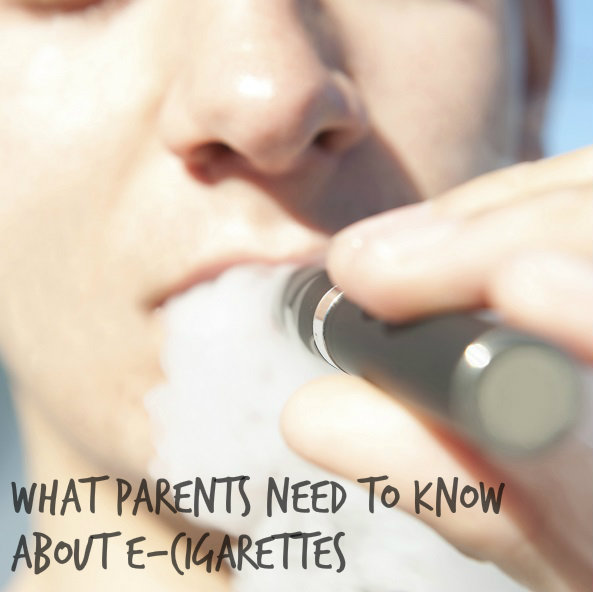 One of the main problems with e-cigarettes is that they are new and not fully tested. While proponents say that they are safe and that even the second-hand vapor is safe, we really don’t know for sure. What we definitely know is that an e-cigarette delivers hits of nicotine, a mind-altering, highly addictive substance. They may be free of all the toxins in cigarette smoke, but if your teen vapes she will become addicted to nicotine. We also know that nicotine can cause cognitive defects in young brains that are long lasting.
One of the main problems with e-cigarettes is that they are new and not fully tested. While proponents say that they are safe and that even the second-hand vapor is safe, we really don’t know for sure. What we definitely know is that an e-cigarette delivers hits of nicotine, a mind-altering, highly addictive substance. They may be free of all the toxins in cigarette smoke, but if your teen vapes she will become addicted to nicotine. We also know that nicotine can cause cognitive defects in young brains that are long lasting.
Another concern is the possibility of e-cigarettes acting as gateway drugs. Research has shown that people who abuse drugs or are addicted follow a pattern. They start with cigarettes or alcohol, and then move onto illegal and harder substances. Teens using e-cigarettes because vaping seems cool and largely safe put themselves at risk for future substance abuse.
Are Teens Using E- Cigarettes?
It may seem unlikely that teens would be interested in a device designed to help smokers quit, but the statistics say otherwise. According to the Centers for Disease Control and Prevention, more than a quarter of a million young people used e-cigarettes in 2013. This number represents only the teens who had never smoked a real cigarette before. This means that e-cigarettes are responsible for getting a huge number of teens hooked on nicotine who may never have tried smoking otherwise.
How Can I Protect My Teen From E- Cigarettes?
The best way that you can protect your teens from the potential dangers of e-cigarettes is to talk to them. You can’t always be watching and guiding them, but they do value your opinions. You have the potential to influence their choices, even when you aren’t by their side. Let them know that you don’t want them to vape or use real cigarettes.
By talking to your teens about e-cigarettes you also give them the power of information. Many teens start using these devices with the false assumption that they are perfectly safe. They may be safer than cigarettes, but they are not safe and there are many risks involved. Educate your teens and help them to be aware of the risks and you will empower them to make better decisions. E-cigarettes are likely here to stay, and they are useful tools for smokers, but they pose risks to our young people. By spreading awareness we can all do our part to protect them.
E-Cigarettes Being Secretly Used To Hide Drug Use – See How They’re Getting Away With This!
19 Feb 2015
How Does Journaling Help Addiction Recovery?
If you have made it through a drug or alcohol addiction treatment program and are now sober, congratulations are in order. You should feel proud of your accomplishment. You should also continue to work at your sobriety.
Recovery is a lifelong process and if you let it slide, you will pay the consequences. There are many ways you can strengthen your sobriety including finding meaningful activities and relationships to fill your life. One activity you may not have considered, but should, is journaling.
What Is Journaling?
Journaling simply means personal writing done on a regular basis. This could mean writing every day, every other day, or once a week. Journaling is always personal, but it can be creative as well. It should not be a simple record of what you do each day; it should be a reflective exercise.
You can write about anything really, but a traditional journal includes reflections on the day’s activities as well as reflections on past experiences. A journal can also include creative writing exercises, fiction writing and poetry. The important part of journaling is that you do it regularly.
Journaling For Addiction Recovery
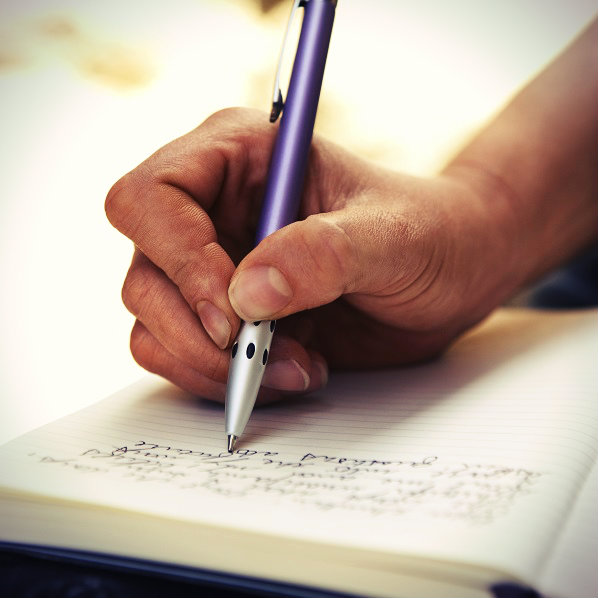 Journaling can be a useful tool for anyone with any kind of life experiences, but for an addict in recovery it is particularly powerful in strengthening sobriety. Use your journal to reflect on your past as an addict, to puzzle through the chaos of your life with addiction and to record your accomplishments in recovery.
Journaling can be a useful tool for anyone with any kind of life experiences, but for an addict in recovery it is particularly powerful in strengthening sobriety. Use your journal to reflect on your past as an addict, to puzzle through the chaos of your life with addiction and to record your accomplishments in recovery.
Write about your daily battles to resist cravings and you will find your burden is lifted, even just a little bit. Record and reflect on your interactions with other people and how you are progressing at rebuilding damaged relationships. Write creative pieces like fiction or poetry if you find it clears your mind and gives you something interesting to do.
The Benefits Of Journaling
As an addict, your journal will help you reflect and organize your thoughts, feelings and experiences. This can be a powerful way to heal from your disease. Research has found that writing is beneficial for everyone, not just addicts. Take advantage of the healing power of journaling to help you become well again:
- Cope with trauma – Research has found that when people who have suffered traumatic experiences write about them, they are healthier, both physically and mentally.
- Beat stress and other negative emotions – When you write about what you are feeling, it helps to relieve those emotions. Write when you are angry, stressed, depressed or anxious.
- Make sense of yourself – Writing is a great way to get to know yourself better and to make sure you understand your complex thoughts and feelings.
- Solve problems – Clarifying your thoughts and feelings can help you to solve problems that are going on in your life and causing you worry.
Getting Started
There are so many benefits to writing. Why not get started right away? You can write on your computer, but using a pen and paper is also satisfying. Choose a notebook or nice journal and your favorite pen. Next, set aside at least 15 minutes for uninterrupted writing. Commit to those 15 minutes each day for one week. If you are skeptical about the process, promise yourself to at least try it once a day for a week. By the end of the week you may just be convinced to keep going.
When you start, write about whatever comes to mind. Don’t be afraid to write about your deepest thoughts and emotions. Remember that no one else needs to read this. It is for you alone. When you keep that in mind, and really let go, you will find that the healing power of your journal is immense.
See Our Other Posts On Alternative Therapies For Recovery
16 Feb 2015
Drug-Testing Your Teen – Can You And Should You?
Drug use is a big problem among young people today. They have more access than ever before and as a parent you have reason to worry. No teen is immune to the pressure to use drugs, not even the star athletes or the academic achievers. Doing your best to prevent your child from abusing drugs is important. You have a big influence over him and the choices he makes. Should your preventative measures include drug tests? There are plenty of drug tests on the market and you can do home tests or have your child tested at your doctor’s office.
The Dangers Of Drug Use In Teens
As a responsible parent you should be concerned about drug use, even if you feel like your teen would never make that choice. Teens face a lot of pressures and many turn to drugs, even the ones you would never suspect of doing so.
 And the dangers of using drugs are great for young people. They run the risk of developing a life-long habit. They may have accidents while under the influence and hurt or kill themselves or others. Drug use may lead to psychiatric problems, antisocial behaviors, and poor academic performance. With so many potential negative consequences, it might seem like drug testing is the only way to truly protect your child.
And the dangers of using drugs are great for young people. They run the risk of developing a life-long habit. They may have accidents while under the influence and hurt or kill themselves or others. Drug use may lead to psychiatric problems, antisocial behaviors, and poor academic performance. With so many potential negative consequences, it might seem like drug testing is the only way to truly protect your child.
Drug Testing: The Options
You can find home drug testing kits easily online or at a drugstore and most of them use urine to test for the presence of drugs. These home kits have some limitations, though. Most urine tests don’t detect all illegal drugs, including party drugs like LSD, ecstasy and ketamine. They also fail to detect inhalants, a common way that teens get high on household chemicals, steroids and alcohol. These tests are also imperfect in their accuracy. They can produce both false positive and false negative results. Your other option, which is likely to produce better results, is to have a test done by your pediatrician and analyzed in a lab.
Should I Drug Test My Teen?
Whether you choose to use drug testing as a preventative measure is personal. The American Academy of Pediatrics (AAP) strongly opposes using involuntary drug tests. In other words, if you choose to go this route, make sure your teen understands your reasoning and agrees to be tested. Forcing your teen to be tested for drugs can be damaging to your relationship.
The AAP also believes there are better ways to prevent drug use or to monitor a teen who is displaying signs of possible drug use. Start by talking to your child about drugs. Talk about how harmful they can be and how your teen can say no to friends who are using. Make it clear that you will not tolerate drug use and why. Talking openly is a powerful way to stay connected with your child and to influence the choices he makes.
One situation that may be more appropriate for drug testing is if you have a teen that has been through a treatment program for substance abuse. It may be an important part of his recovery to test him regularly. That way you can catch a relapse before it gets out of hand. If he is serious about his recovery, he should agree to the testing.
Drug use in teens is a scary situation to contemplate. Young people are vulnerable to peer pressure and they can suffer so much damage from drug use. Do your best to influence your teen’s choices and to monitor his behavior for signs of drug use. Just remember that you are not a police officer. You are a parent who cares about your child.
Afraid That Your Teen Is Abusing Drugs & Don’t Know What To Do?
Call Us Now – We Are Here To Help You!
12 Feb 2015
How To Get Better Sleep In Early Recovery
Healthy life habits may seem like the least of your concerns when you’re in the early stages of recovery from addiction. You’re probably experiencing intense urges to use again and are focused on not relapsing. But your will can be strengthened if you take care of the basic needs that keep you healthy.
Sleep is one of those basic needs, and it often suffers in early recovery. If you can ensure that you sleep well and for long enough, you’ll feel better and be better able to resist your cravings.
Insomnia And Recovery
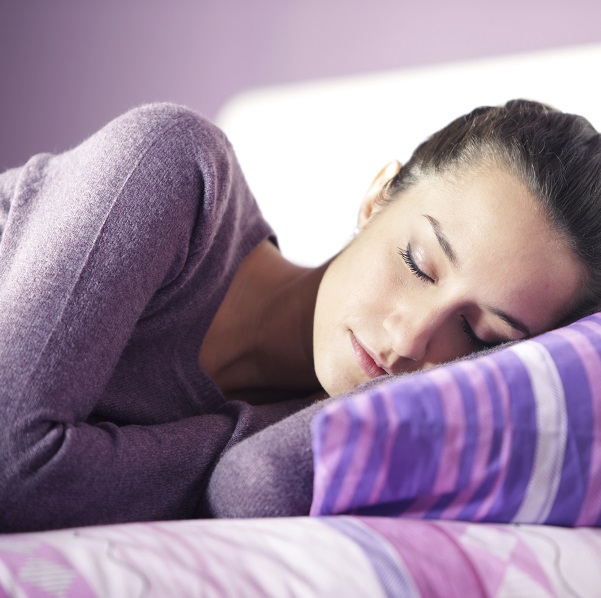 If you’re having trouble sleeping now that you’re in recovery, you’re not alone. Insomnia is a common complaint of people newly recovering from addiction. It’s also a risk factor for relapse, so it’s important that you take steps to correct your sleeping woes.
If you’re having trouble sleeping now that you’re in recovery, you’re not alone. Insomnia is a common complaint of people newly recovering from addiction. It’s also a risk factor for relapse, so it’s important that you take steps to correct your sleeping woes.
Researchers have found that the incidence of sleep difficulties is up to five times higher in people recovering from addiction than in the general population. Furthermore, this insomnia can last for months or even years.
Therapy For Insomnia
Treating your insomnia is important if you want to feel better and be most able to resist a relapse. Using medications, even over-the-counter sleep aids, is risky for a person recovering from addiction. Therapy, on the other hand, is a good place to start working on better sleep. Evidence shows that cognitive behavioral therapy (CBT) can help recovering addicts with insomnia.
CBT is a therapeutic approach that focuses on changing behaviors. A therapist will work with you to teach you how to be aware of your behaviors, how they impact your sleep and how to change them. CBT for insomnia may include keeping a sleep diary, learning good sleep practices, limiting time in bed to actual sleep, controlling stimulation before bed time and managing negative thoughts about sleeping.
Tips On How To Get Better Sleep In Early Recovery
If you aren’t in a position to work with a therapist for your insomnia, there are still some things you can do to try to get to sleep. Good practices for sleeping aren’t always obvious, so you can learn how to be a better sleeper with these tips:
- Start by targeting your bedroom – Make sure your bed is comfortable and that your room is quiet and dark at night. Use ear plugs and heavy curtains if needed and keep the temperature cool.
- Timing is also important for good sleep – You should have a set schedule for when you go to bed and when you get up in the morning. Stick with it every day of the week. This will help train your body and mind to know when it’s time to sleep. The regular pattern of sleeping and waking is an important rhythm. Don’t interrupt it for anything, even on the weekends.
- Prepare yourself for bed at night with a relaxing routine – Avoid caffeine for at least eight hours before your bed time. Don’t drink anything for two hours before bed time to avoid waking in the night. Avoid anything stressful or stimulating before bed time. This includes exciting television programs and exercise. Instead, do something relaxing. Go for a short walk, have a cup of herbal tea, or read a book. Don’t use electronic devices before bed. The artificial light is disruptive to your sleep.
If you can learn to be a good sleeper, you can strengthen your sobriety. Resisting cravings is always easier when you feel good, and you can’t feel good without good sleep. Try changing your sleep practices and if that doesn’t work, consider getting help from a professional. It could be the best thing you do for your recovery.
How To Avoid Getting Hooked On Sleeping Pills – Make Sure You Don’t Take It To The Next Step Of Sleeping Pills And Addiction
09 Feb 2015
Are You Enabling Your Partner’s Addiction?
If your partner is using drugs or alcohol, there is a chance that you are enabling his habit. It may sound ridiculous at first. Why on earth would you want him to use? Why would you encourage him? The truth is that enabling is subtle, and you may be doing it in ways that even you don’t realize. Take the time to consider your role in the relationship and decide if you are an enabler or if you could be doing more to help him stop using.
What Is An Enabler?
An enabler is rarely overt. You’re probably not feeding your partner drugs or alcohol. You’re not likely to actively encourage him to go out and drink or to spend more money on drugs.
In most cases an enabler is someone who is more subtle. This is someone who takes away the consequences of drug or alcohol use so that the user doesn’t experience the full costs of his choices and behaviors. Enablers often believe that they are helping their loved ones, when in fact they are causing more harm. It is those consequences that should be an addict’s biggest motivation to stop using.
Signs Of Enabling
How can you tell if you are enabling your partner’s habit? Think about your actions and how you respond to his drug use or drinking. Consider whether the choices you make minimize the consequences he should be experiencing. Here are some concrete examples of what you might be doing if you are an enabler:
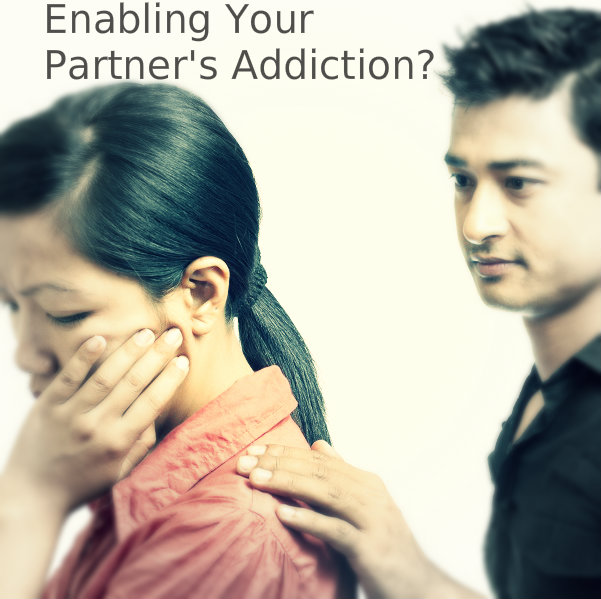 You give your partner money when he’s desperate. Money is the fuel for his addiction. If he runs out and you give him more, he will never experience the total loss of money caused by his habit.
You give your partner money when he’s desperate. Money is the fuel for his addiction. If he runs out and you give him more, he will never experience the total loss of money caused by his habit.
- You make excuses for him. When he misses appointments, days of work or school, or when he behaves inappropriately, there should be consequences. If you make excuses for him, he won’t feel the repercussions.
- You drive him wherever he needs to go. Whether he lies about it or not, chances are you are driving him to places where he uses or buys drugs.
- You help him when he gets into legal trouble. Legal problems are often a consequence of drug use or excessive drinking. If you help get him out of it, you’re enabling his habit.
- You keep quiet and don’t confront him about what worries you. Not talking to him about how often he passes out, how badly he behaves when high or drunk or how he is draining your bank account isn’t helping.
How To Stop Enabling And Start Helping
If you recognize yourself in the signs of enabling, you need to stop supporting your partner’s habit and start helping him get over it. Know that it isn’t easy to change your own behaviors, but it is crucial. Stop actively doing things that help him use, such as giving him money, transporting him, or making excuses when he messes up. He will be hurt, upset and even angry with you, but you have to remain strong in the face of his pushback.
Once you have made it clear that you will no longer be actively helping him use, sit your partner down for a frank talk and provide options for him to get help. If you are struggling with this or if you are afraid you’ll back down, enlist the help of other people who care about you and your partner. There is strength in numbers. It will be difficult, but if you are persistent your loved one will eventually feel the consequences of his habit and will have no choice but to make a change.
If You Need Help With Your Partner’s Addiction Or With Setting Up An Intervention – Call Us Now!
05 Feb 2015
Can You Safely Use Recreational Marijuana?
Recreational marijuana is now legal for adults in Washington and Colorado. The citizens of those states spoke and voted for legalization. The votes signify shifting attitudes across the country. Many people do not believe that marijuana should be kept illegal. Proponents of legal marijuana say that it is less risky than cigarettes or alcohol and that the tax revenue can help state and local governments.
Does this mean that you can use marijuana safely?
Short-Term Effects Of Marijuana
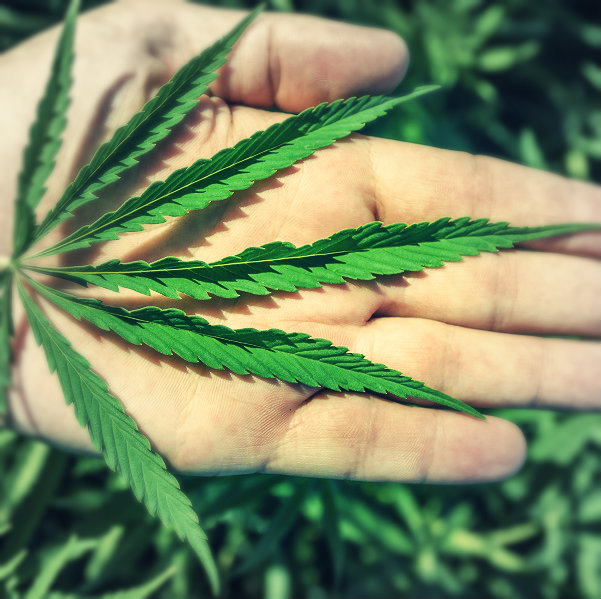 Before you decide whether or not you can safely use recreational marijuana, you should know the facts. When you smoke pot or consume the cannabis plant you are taking in a psychoactive compound called THC. This is the substance that is largely responsible for the high that accompanies pot smoking. THC acts on certain receptors in the brain to produce a number of effects: giddiness, lightheadedness, relaxation, introspection, a desire to eat, but also paranoia, irritability and disturbing thoughts.
Before you decide whether or not you can safely use recreational marijuana, you should know the facts. When you smoke pot or consume the cannabis plant you are taking in a psychoactive compound called THC. This is the substance that is largely responsible for the high that accompanies pot smoking. THC acts on certain receptors in the brain to produce a number of effects: giddiness, lightheadedness, relaxation, introspection, a desire to eat, but also paranoia, irritability and disturbing thoughts.
Using marijuana also results in an impairment of certain abilities. Your memory gets worse, as does your ability to focus and concentrate. It blunts your motor skills and your ability to operate machinery effectively. Driving a car is extremely dangerous when under the influence of marijuana.
Long-Term Effects Of Marijuana
The long-term impact of smoking pot is still being researched, but there is plenty of evidence that it can have some seriously negative effects. Most problematic is the impact on young people. If you start using marijuana as a teen you are at a much greater risk of getting addicted. You also face the risk of permanently damaging cognitive functions. Regular users who began smoking as teens see a drop of as much as eight IQ points into adulthood.
Even casual users of marijuana experience permanent changes in the brain. These include changes to the parts of the brain that govern motivation, addiction and emotion. And of course, there are health problems associated with smoking, which include respiratory illnesses and potentially the development of lung cancer with frequent and regular use.
Marijuana Is Addictive
Proponents of marijuana use will argue that the drug is not addictive, but research says otherwise. It is less addictive than nicotine, alcohol and heroin, but it is habit forming. In fact, nine percent of people who ever use the drug will become dependent on it. The risk is especially high for young people. For users who first started smoking as a teen, there is a much greater chance of getting hooked than for an adult using the drug for the first time.
Adults using pot run the risk of becoming addicted too. The greatest risk comes with using it regularly and frequently. Unlike harder drugs, addiction to pot is not sudden. It comes on more slowly, but can be just as devastating. 18 percent of people seeking drug addiction treatment in the U.S. are addicted to marijuana. Withdrawal symptoms that make it difficult to quit include insomnia, cravings, anxiety and irritability.
If you have been wondering about recreational marijuana and whether it can truly be safe for a responsible adult, make sure you get all the facts. No drug is ever safe. Marijuana may carry fewer risks than heroin or cocaine, but it can alter your brain, dull your motor skills, impair your memory, lead you to have an accident, lead to respiratory problems and cause you to become an addict. Are these risks worth the high? That is for you to decide.
No one would have ever expected anything but success out of Liam. He was born to a charmed, wealthy family and had been its shining jewel. An all-star athlete and honors student, he’d attended Stanford University School of Medicine, with every intention of becoming the neurosurgeon he vowed he’d become at only 17. But a skiing accident changed everything for Liam; he’d been accelerating down a black diamond when a less skilled skier collided with him, injuring his lumbar. The back pain and medical treatments, including two surgeries, entailed the use of opioid painkillers in order to get Liam through the day.
Without his steady hand and laser focus, or an ability to stand comfortably for hours on end, his dream of operating fell away. And without an ability to be active in the same ways he had been—Liam had been something of a fitness nut before his injuries—he grew depressed. Soon enough, he realized he’d developed a problem with his pain medication; he had become dependent.
When You Become Addicted To The Treatment
 Liam was still seeking a residency (he would be a neurologist rather than a neurosurgeon), and knew that an addiction could drastically complicate his hopes. He’d heard plenty about compromised doctors and nurses who’d been arrested while abusing hospital medications, or injuring patients while high. He didn’t want to become a shameful statistic. So he sought treatment through a private referral. He would take Suboxone, or buprenorphine, an opioid pain reliever also used for long-term treatment of opioid addiction.
Liam was still seeking a residency (he would be a neurologist rather than a neurosurgeon), and knew that an addiction could drastically complicate his hopes. He’d heard plenty about compromised doctors and nurses who’d been arrested while abusing hospital medications, or injuring patients while high. He didn’t want to become a shameful statistic. So he sought treatment through a private referral. He would take Suboxone, or buprenorphine, an opioid pain reliever also used for long-term treatment of opioid addiction.
In the beginning, the buprenorphine worked well, but Liam discovered that the benzodiazepine he’d been prescribed for anxiety relating to his crash and the stress it had caused, when combined with the Suboxone, created something of a high. His habit-seeking behaviors began again in earnest. The Suboxone was no longer serving him as treatment for dependence. He was addicted to the treatment itself.
Opioid Addicts In Need Of Treatment
Buprenorphine, sold as Suboxone or Subutex, was approved by the FDA in 2002 for the treatment of opioid addiction in the U.S. Buprenorphine is prescribed by limited approved doctors as a sublingual (under-the-tongue) treatment for moderate pain and for long-term treatment of opioid addiction to suppress the symptoms of withdrawal and to reduce cravings. While it does not cause euphoria in opioid-dependent patients (and blocks the effects of other opioids for at least 24 hours), it can create euphoria and subsequent dependence in individuals who are not previously dependent on opioids. And while it is considered safer than methadone treatment, individual users still find ways to achieve a high (with combination benzodiazepines in some instances), making them more likely to remain drug dependent and less likely to recover.
From a New York Times piece in November, 2013: “Suboxone is the blockbuster drug most people have never heard of. Surpassing well-known medications like Viagra and Adderall, it generated $1.55 billion in United States sales last year, its success fueled by an exploding opioid abuse epidemic and the embrace of federal officials who helped finance its development and promoted it as a safer, less stigmatized alternative to methadone.”
Questioning Safety With Suboxone
In the realm of addiction, there are (many) dragons. Buprenorphine may, in fact, be doing more good than harm, and until statistical evidence reveals otherwise, a story like Liam’s may be purely anecdotal. There are others like him, but their numbers may stack up only so high compared to the numbers of individuals who are being helped by treatments like Suboxone. Opioids, it appears, create one of the hardest addictions to quit, and those who suffer may need all the help they can get.
Still, it’s wise to bear in mind that crossover addiction—the exchange of one addiction for another—is nearly universal in the addiction community. If an addict drops one addiction, he picks up another. With maintenance treatments like methadone and buprenorphine, the crossover addiction may become a case of choosing between the lesser of evils—and surely Suboxone treatment is a lesser evil than previous painkiller addictions.
If You Are Struggling With Opioid Abuse Or Addiction, It’s Time To Step Up And Make The Call…It Could Change Your Life!


